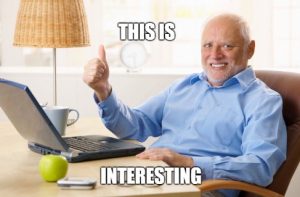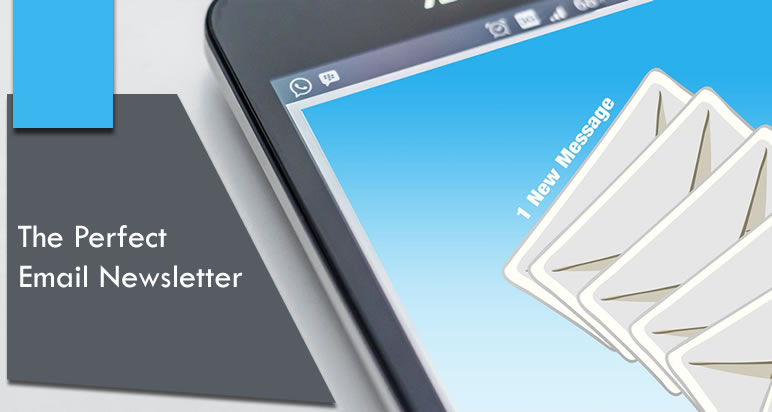Thanks to the wonders of email, it is now easier than ever to keep in touch with your customers. Prior to the rise of the World Wide Web, the only way a business could keep in touch with existing customers was to have a newsletter printed.
This was time-consuming and expensive, even if your local print shop did you a good deal. And then you had the problem of sending out all your beautiful newsletters. Postage is expensive too!
Luckily, things have evolved and today, it is as easy as hitting ‘send’. But before you reach that point, you need something to send out to your subscribers.
Here is a quick guide to crafting the perfect newsletter. The good news is that it is really easy to create a newsletter that people want to read!
What is Your Goal?
Sit down and think carefully about what you want to achieve with your newsletter. Is your goal to let  customers know about new products and services? Or do you want to direct them to your website? It could be either of these things, but the most important end-goal for any small businesses is to create an email newsletter that is also a marketing tool.
customers know about new products and services? Or do you want to direct them to your website? It could be either of these things, but the most important end-goal for any small businesses is to create an email newsletter that is also a marketing tool.
Email is a useful marketing strategy, but to leverage its enormous power, you need to craft the right marketing materials. A poorly designed newsletter isn’t going to hit the mark. Instead, it won’t get read and the recipient may even elect to unsubscribe from your emails. That’s the last thing you want!
Decide what your goal is and work towards that goal. If your aim is to direct people to your website, include prominent CTAs in the form of a great reason why they should click on the link – e.g. to use a discount code or check out a new product. If you are promoting a new service, give the customer more information and explain to them why this new service could save them time and money.
Don’t make your overall message ambiguous in any way. Be very clear on what the newsletter is all about. Provide a summary at the top of the email and then go into more detail afterwards. Finish with a call to action in the form of a button. Research shows that CTA buttons are more effective than a textual link.
Subject Lines
The subject line is the first thing an email recipient sees. If this doesn’t spark their interest, it’s game over for you. Research has found that 35% of subjects will open an email based purely on the subject line. A further 69% will flag an email as spam based on the subject line. This tells us just how important the subject line is, so ignore these stats at your peril.
Firstly, avoid being boring. Giving your email newsletter the title ‘newsletter’ is boring. Nobody will bother reading an email with that subject line. Instead, try and instil a sense of urgency by including time-sensitive words such as ‘last chance’ or ‘important’. If an email newsletter is perceived to be ‘URGENT’ it is way more likely to be opened.
It can also be helpful to personalise your email by including the subject’s name in the subject line. For example, ‘subject: Special Discount for Henry – Last Chance to Get a Great Deal!’
Be Relevant
Relevancy is important. Chances are good that if a person has subscribed to your mailing list, they want to hear about your products and services. So, if your business is selling bathrooms and related products, it wouldn’t be sensible to start talking about unrelated news or deviating too far off the subject of bathrooms.
It doesn’t take much for a recipient to send an email to the junk folder, so try to avoid being too irrelevant or including content that could be classed as contentious in any way.
Make Your Content Interesting
 Blocks of text are not exactly interesting. Readers need a reason to keep on reading and being presented with black and white text is not a good reason. Use images and colour to enliven your newsletter content.
Blocks of text are not exactly interesting. Readers need a reason to keep on reading and being presented with black and white text is not a good reason. Use images and colour to enliven your newsletter content.
Break up text into small sections and keep your content visually appealing. Did you know that 40% of people respond better to visual content? That’s because our brains can process images much faster.
Look at magazines for ideas on how to present information. Magazines use different layouts with text and images in blocks. Adopt the same approach for your newsletters. Try and keep your newsletters brief.
If it takes more than one minute to read your newsletter, trim the fat. Avoid using high-resolution images, as these take too long to download and are a major reason why people don’t open newsletters on mobile devices.
Always monitor engagement of your marketing email newsletters, and if in doubt about the content, try doing some A/B testing to see what works best for your subscribers.
Signing off
That’s what I have today to help your email marketing strategies achieve more results. If you like this post, please share on social media.
Drop a comment below let me know what you think.

Comments are closed.